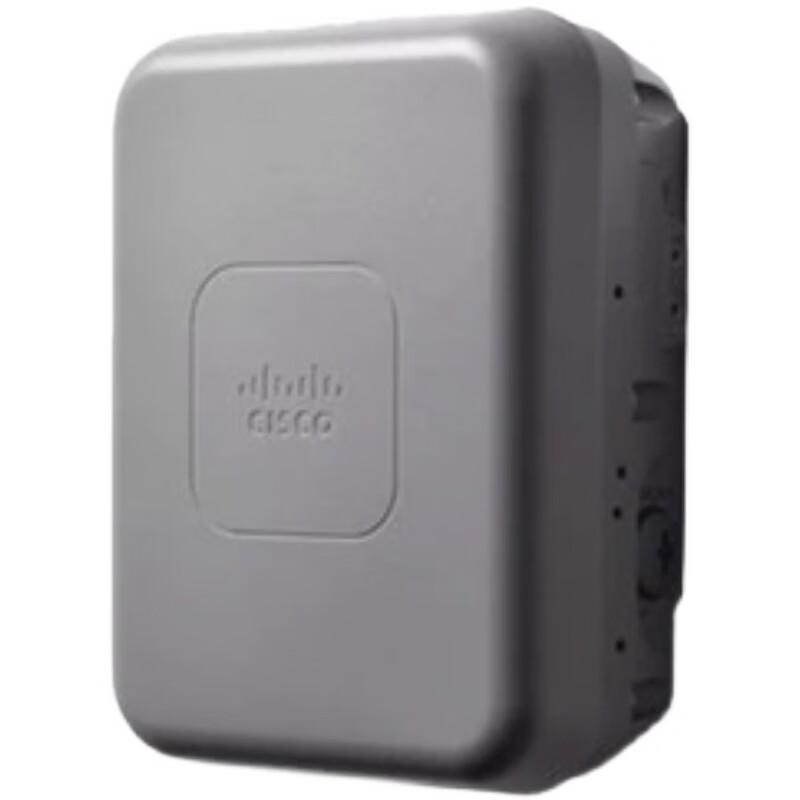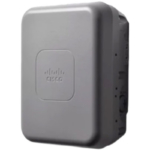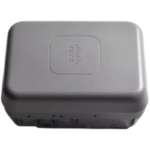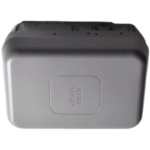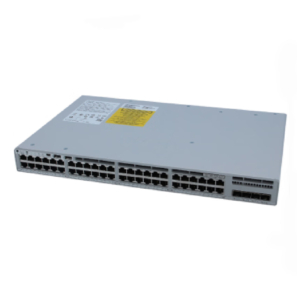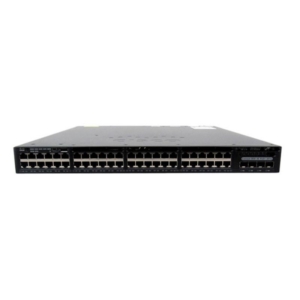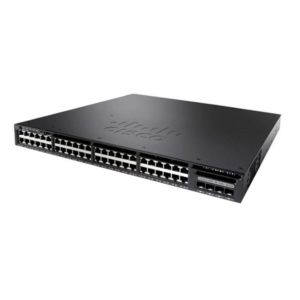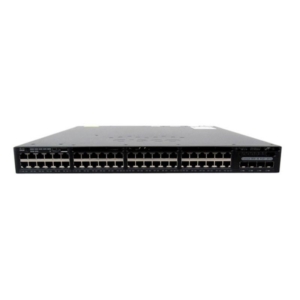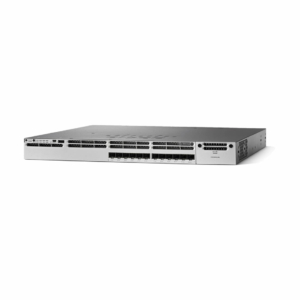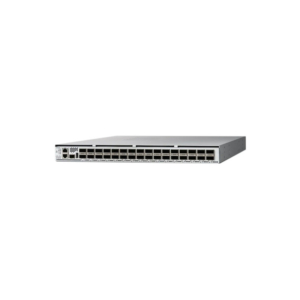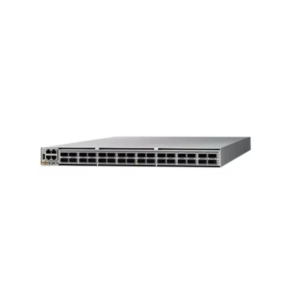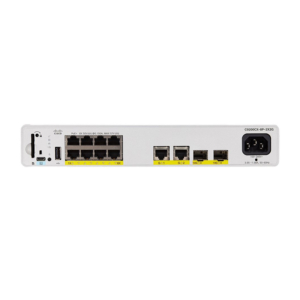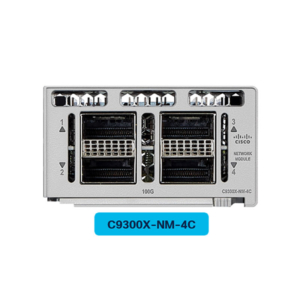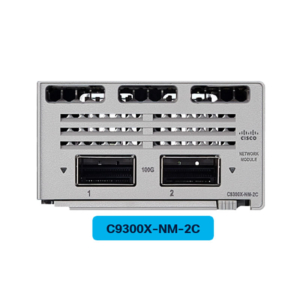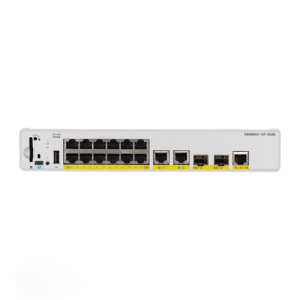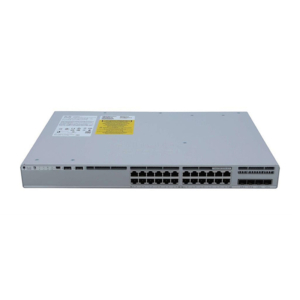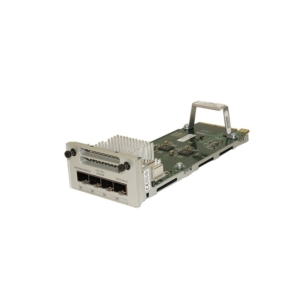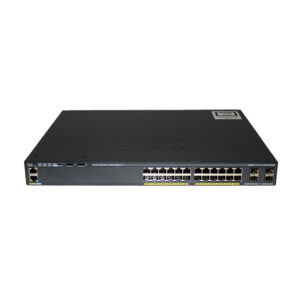Cisco Aironet®1560 Series Outdoor Access Points offer the latest 802.11ac Wave 2 functions in a rugged, low-profile housing that service providers and enterprises can deploy easily.
Ideal for applications requiring rugged outdoor Wi-Fi coverage, the Cisco Aironet 1560 Series Access Points offer the latest IEEE 802.11ac Wave 2 radio standard in a compact, aesthetically pleasing, easy-to-deploy package. The 1560 Series offers flexible deployment options for service providers and enterprise networks, that need the fastest links possible for mobile, outdoor clients (smartphones, tablets, and laptops) and wireless backhaul. With options for internal or external antennas, the 1560 Series Access Points give network operators the flexibility to balance their desired wireless coverage with their need for easy deployment. The Cisco Aironet 1560 Series is built on the strong base of Cisco®wireless innovations such as:
●Cisco CleanAir®technology for spectrum intelligence
●Cisco ClientLink technology for beamforming
●Radio Resource Management (RRM) for dynamic transmitter channel and power control
Whether deployed as a traditional access point or wireless mesh access point, the Cisco Aironet 1560 Series provides the throughput capacity needed for today’s bandwidth-hungry devices.
Cisco Aironet 1560 Series Outdoor Access Points Data Sheet
Features and benefits
Table 1 lists the features and benefits of the Cisco Aironet 1560 Series.
Table 1.Features and Benefits of Cisco Aironet 1560 Series
| Feature | Benefit |
| 802.11ac Wave 2 radio | Provides up to 1.3-Gbps data rates with 3 x 3 Multiple Input, Multiple Output (MIMO) and up to three spatial streams |
| Multiuser MIMO (MU-MIMO) |
Allows transmission of data to multiple 802.11ac Wave 2-capable clients simultaneously to improve client experience; prior to 802.11ac Wave 2, access points could transmit data to only one client at a time, typically referred to as single-user MIMO |
| Flexible deployment modes | Allows for deployment of the 1560 in a variety of ways including point -to-point and mesh networks; it can also be deployed with the Cisco Mobility Express Solution, which is ideal f or small to medium -sized deployments that supports multiple access points without a physical controller; all deployment modes are easy to set up and configure |
| Small Form-Factor Pluggable (SFP) port | Supports optical fiber-based network connectivity for remote locations |
Prominent feature/differentiator/capability
The Cisco Aironet 1560 Series offers the following features:
●Improved performance for multiple client devices: The 802.11ac Wave 2 access points use MU-MIMO technology, which allows different data streams to all flow at once from the access point to multiple 802.11ac Wave 2-supported devices. Now, multiple 802.11ac Wave 2 devices can connect at the same time, getting the information they need quicker.
●5-GHz support: The Cisco Aironet 1560 Series doubles the scale of 5 -GHz mobile devices and raises the performance of high-density environments.
●4G LTE Coexistence: The Cisco Aironet 1560 Series includes robust filtering around the 2.4 GHz unlicensed band to block out nearby licensed 4G LTE cellular signals.
●Cisco Flexible Antenna Port technology uses software configurable for either single- or dual-band antennas. It allows you to use the same antenna ports for either dual-band antennas to reduce footprint or single-band antennas to optimize radio coverage.
●Cisco Mobility Express: This solution is designed to bring enterprise-class wireless access to small and medium-sized networks. Easy to set up with low maintenance, Mobility Express includes advanced features from Cisco and does not require a physical controller appliance.
●Cisco High Density Experience (HDX): Cisco HDX comes standard on the 1560, giving this access point top-of-the-line network efficiency over a large number of wireless clients. HDX uses customized chipsets to target the needs of high-density networks. It is built with best-in-class RF architecture and gives a better user experience for high-performance applications.
Product specifications
Table 2 lists the specifications of the 1560 access point.
Table 2.Specifications of Cisco Aironet 1560 Series
| Item | Specification | |||||||||||
| 802.11ac Wave 1 and 2 capabilities | ●1562I: 3 x 3 MIMO with three spatial streams
●1562E/D 2 x 2 MIMO with two spatial streams ●Multi- and single-user MIMO ●Maximal Ratio Combining (MRC) ●802.11ac beamforming (transmit beamforming) ●20-, 40-, and 80-MHz channels ●PHY data rates up to 1.3 Gbps (80 MHz in 5 GHz) ●Packet aggregation: A-MPDU (Tx/Rx) and A-MSDU (Tx/Rx) ●802.11 Dynamic Frequency Selection (DFS) ●Cyclic-Shift-Diversity (CSD) support |
|||||||||||
| 802.11n (and related) capabilities |
●1562I: 3 x 3 MIMO with three spatial streams
●1562E/D: 2 x 2 MIMO with two spatial streams ●MRC ●20- and 40-MHz channels ●PHY data rates up to 450 Mbps ●Packet aggregation: A-MPDU (Tx/Rx) and A-MSDU (Tx/Rx) ●802.11 DFS ●CSD support |
|||||||||||
| Data rates supported | 802.11a: 6, 9, 12, 18, 24, 36, 48, and 54 Mbps
802.11b/g: 1, 2, 5.5, 6, 9, 11, 12, 18, 24, 36, 48, and 54 Mbps |
|||||||||||
| 802.11n data rates on 2.4 and 5 GHz: | ||||||||||||
| MCS Index | GI4 = 800 ns | GI = 400 ns | ||||||||||
| 20-MHz Rates (Mbps) | 40-MHz Rates (Mbps) | 20-MHz Rates (Mbps) | 40-MHz Rates (Mbps) | |||||||||
| 0 | 6.5 | 13.5 | 7.2 | 15 | ||||||||
| 1 | 13 | 27 | 14.4 | 30 | ||||||||
| 2 | 19.5 | 40.5 | 21.7 | 45 | ||||||||
| 3 | 26 | 54 | 28.9 | 60 | ||||||||
| 4 | 39 | 81 | 43.3 | 90 | ||||||||
| 5 | 52 | 108 | 57.8 | 120 | ||||||||
| 6 | 58.5 | 121.5 | 65 | 135 | ||||||||
| 7 | 65 | 135 | 72.2 | 150 | ||||||||
| 8 | 13 | 27 | 14.4 | 30 | ||||||||
| 9 | 26 | 54 | 28.9 | 60 | ||||||||
| 10 | 39 | 81 | 43.3 | 90 | ||||||||
| 11 | 52 | 108 | 57.8 | 120 | ||||||||
| 12 | 78 | 162 | 86.7 | 180 | ||||||||
| 13 | 104 | 216 | 115.6 | 240 | ||||||||
| 14 | 117 | 243 | 130 | 270 | ||||||||
| 15 | 130 | 270 | 144.4 | 300 | ||||||||
| 16 | 19.5 | 40.5 | 21.7 | 45 | ||||||||
| 17 | 39 | 81 | 43.3 | 90 | ||||||||
| 18 | 58.5 | 121.5 | 65 | 135 | ||||||||
| 19 | 78 | 162 | 86.7 | 180 | ||||||||
| 20 | 117 | 243 | 130 | 270 | ||||||||
| 21 | 156 | 324 | 173.3 | 360 | ||||||||
| 22 | 175.5 | 364.5 | 195 | 405 | ||||||||
| 23 | 195 | 405 | 216.7 | 450 | ||||||||
| 802.11ac Data Rates (5 GHz) | ||||||||||||
| Spatial Streams | MCS | GI = 800 ns | GI = 400 ns | |||||||||
| 20 MHz | 40 MHz | 80 MHz | 20 MHz | 40 MHz | 80 MHz | |||||||
| 1 | 0 | 6.5 | 13.5 | 29.3 | 7.2 | 15 | 32.5 | |||||
| 1 | 1 | 13 | 27 | 58.5 | 14.4 | 30 | 65 | |||||
| 1 | 2 | 19.5 | 40.5 | 87.8 | 21.7 | 45 | 97.5 | |||||
| 1 | 3 | 26 | 54 | 117 | 28.9 | 60 | 130 | |||||
| 1 | 4 | 39 | 81 | 175.5 | 43.3 | 90 | 195 | |||||
| 1 | 5 | 52 | 108 | 234 | 57.8 | 120 | 260 | |||||
| 1 | 6 | 58.5 | 121.5 | 263.3 | 65 | 135 | 292.5 | |||||
| 1 | 7 | 65 | 135 | 292.5 | 72.2 | 150 | 325 | |||||
| 1 | 8 | 78 | 162 | 351 | 86.7 | 180 | 390 | |||||
| 1 | 9 | – | 180 | 390 | – | 200 | 433.3 | |||||
| 2 | 0 | 13 | 27 | 58.5 | 14.4 | 30 | 65 | |||||
| 2 | 1 | 26 | 54 | 117 | 28.9 | 60 | 130 | |||||
| 2 | 2 | 39 | 81 | 175.5 | 43.3 | 90 | 195 | |||||
| 2 | 3 | 52 | 108 | 234 | 57.8 | 120 | 260 | |||||
| 2 | 4 | 78 | 162 | 351 | 86.7 | 180 | 390 | |||||
| 2 | 5 | 104 | 216 | 468 | 115.6 | 240 | 520 | |||||
| 2 | 6 | 117 | 243 | 526.5 | 130 | 270 | 585 | |||||
| 2 | 7 | 130 | 270 | 585 | 144.4 | 300 | 650 | |||||
| 2 | 8 | 156 | 324 | 702 | 173.3 | 360 | 780 | |||||
| 2 | 9 | – | 360 | 780 | – | 400 | 866.7 | |||||
| 3 | 0 | 19.5 | 40.5 | 87.8 | 21.7 | 45 | 97.5 | |||||
| 3 | 1 | 39 | 81 | 175.5 | 43.3 | 90 | 195 | |||||
| 3 | 2 | 58.5 | 121.5 | 263.3 | 65 | 135 | 292.5 | |||||
| 3 | 3 | 78 | 162 | 351 | 86.7 | 180 | 390 | |||||
| 3 | 4 | 117 | 243 | 526.5 | 130 | 270 | 585 | |||||
| 3 | 5 | 156 | 324 | 702 | 173.3 | 360 | 780 | |||||
| 3 | 6 | 175.5 | 364.5 | – | 195 | 405 | – | |||||
| 3 | 7 | 195 | 405 | 877.5 | 216.7 | 450 | 975 | |||||
| 3 | 8 | 234 | 486 | 1053 | 260 | 540 | 1170 | |||||
| 3 | 9 | 260 | 540 | 1170 | 288.9 | 600 | 1300 | |||||
| Frequency band and 20- MHz operating channels (regulatory domains) | A:
2.412 to 2.462 GHz, 11 channels 5.280 to 5.320 GHz, 3 channels 5.500 to 5.580 GHz, 5 channels 5.660 to 5.700 GHz, 3 channels 5.745 to 5.825 GHz, 5 channels B: 2.412 to 2.462 GHz, 11 channels 5.180 to 5.240 GHz, 4 channels 5.260 to 5.320 GHz, 4 channels 5.500 to 5.720 GHz, 12 channels 5.745 to 5.825 GHz, 5 channels C: 2.412 to 2.472 GHz, 13 channels 5.745 to 5.825 GHz, 5 channels D: 2.412 to 2.462 GHz, 11 channels 5.745 to 5.865 GHz, 7 channels E: 2.412 to 2.472 GHz, 13 channels 5.500 to 5.580 GHz, 5 channels 5.660 to 5.700 GHz, 3 channels F: 2.412 to 2.472 GHz, 13 channels 5.745 to 5.805 GHz, 4 channels G: 2.412 to 2.472 GHz, 13 channels 5.745 to 5.825 GHz, 5 channels -H: 2.412 to 2.472 GHz, 13 channels 5.745 to 5.825 GHz, 5 channels -I: 2.412 to 2.472 GHz, 13channels 5.180 to 5.320 GHz, 8channels (Supported countries – *Egypt) -K: 2.412 to 2.462 GHz, 11 channels 5.280 to 5.320 GHz, 3 channels 5.500 to 5.620 GHz, 7 channels 5.745 to 5.805 GHz, 4 channels -L: 2.412 to 2.472 GHz, 13 channels 5.500 to 5.620 GHz, 7 channels 5.745 to 5.865 GHz, 7 channels -M: 2.412 to 2.472 GHz, 13 channels 5.500 to 5.580 GHz, 5 channels 5.660 to 5.700 GHz, 3 channels 5.745 to 5.805 GHz, 4 channels -N: 2.412 to 2.462 GHz, 11 channels 5.745 to 5.825 GHz, 5 channels -Q: 2.412 to 2.472 GHz, 13 channels 5.500 to 5.700 GHz, 11 channels -R: 2.412 to 2.472 GHz, 13 channels 5.260 to 5.320 GHz, 4 channels 5.660 to 5.700 GHz, 3 channels 5.745 to 5.825 GHz, 5 channels -S: 2.412 to 2.472 GHz, 13 channels 5.500 to 5.700 GHz, 11 channels 5.745 to 5.825 GHz, 5 channels -T: 2.412 to 2.462 GHz, 11 channels 5.500 to 5.580 GHz, 5 channels 5.660 to 5.700 GHz, 3 channels 5.745 to 5.825 GHz, 5 channels -Z: 2.412 to 2.462 GHz, 11 channels 5.500 to 5.580 GHz, 5 channels 5.660 to 5.700 GHz, 3 channels 5.745 to 5.825 GHz, 5 channels |
|||||||||||
 IT Network Equipment Supplier
IT Network Equipment Supplier

